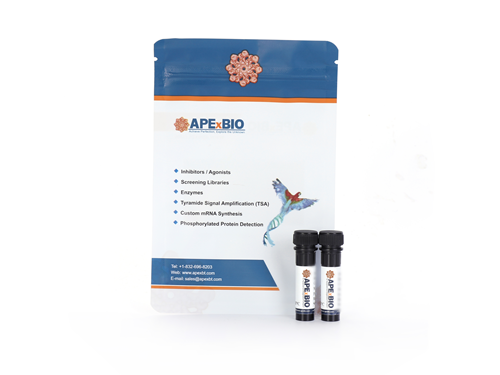Streptavidin-R-phycoerythrin (R-phycoerythrin, R-PE)
Streptavidin is a 52,800 dalton tetrameric protein that binds to Biotin with high specificity, and one molecule Streptavidin can bind to 4 Biotin molecules, and this binding is irreversible. Compared with avidin, the affinity of Streptavidin and Avidin, which is derived from egg white, is highly similar to that of Biotin, but Streptividin is almost uncharged under neutral conditions, so the non-specific binding of Streptavidin is much lower than that of Avidin, and the non-specific background of the detection is much less. Streptavidin can be used for the detection of Biotin-labeled antibodies, nucleic acids, proteins, or other biotinylated molecules.
Phycoerythrin, also known as R-phycoerythrin (R-PE), is a very bright phycobiliprotein isolated from red algae with a molecular weight of 240,000 daltons, a maximum absorption wavelength of about 496, 546, and 565 nm, and a maximum fluorescence emission wavelength of ∼574 nm. R-PE is an excellent fluorescent probe that is 5–10 times brighter than organic fluorescents due to its harmlessness, high fluorescence quantum yield, large Stoker shift, bright color, and low background fluorescence interference, but its poor photostability is generally not recommended for microscopy, but its wide absorption and bright orange signal make it ideal for flow cytometry, microplate, and microarray applications when sensitive detection of biotin is required.
Streptavidin-R-Phycoerythrin (SA-R-PE) is a conjugate product that combines Streptavidin protein and phycoerythrin, which is mainly used for flow cytometry, microplate and microarray detection, such as combined with biotin for immunoassays, and is commonly used in enzyme-linked immunoassay, immunohistochemistry, flow cytometry, in situ hybridization and spot hybridization experiments.









